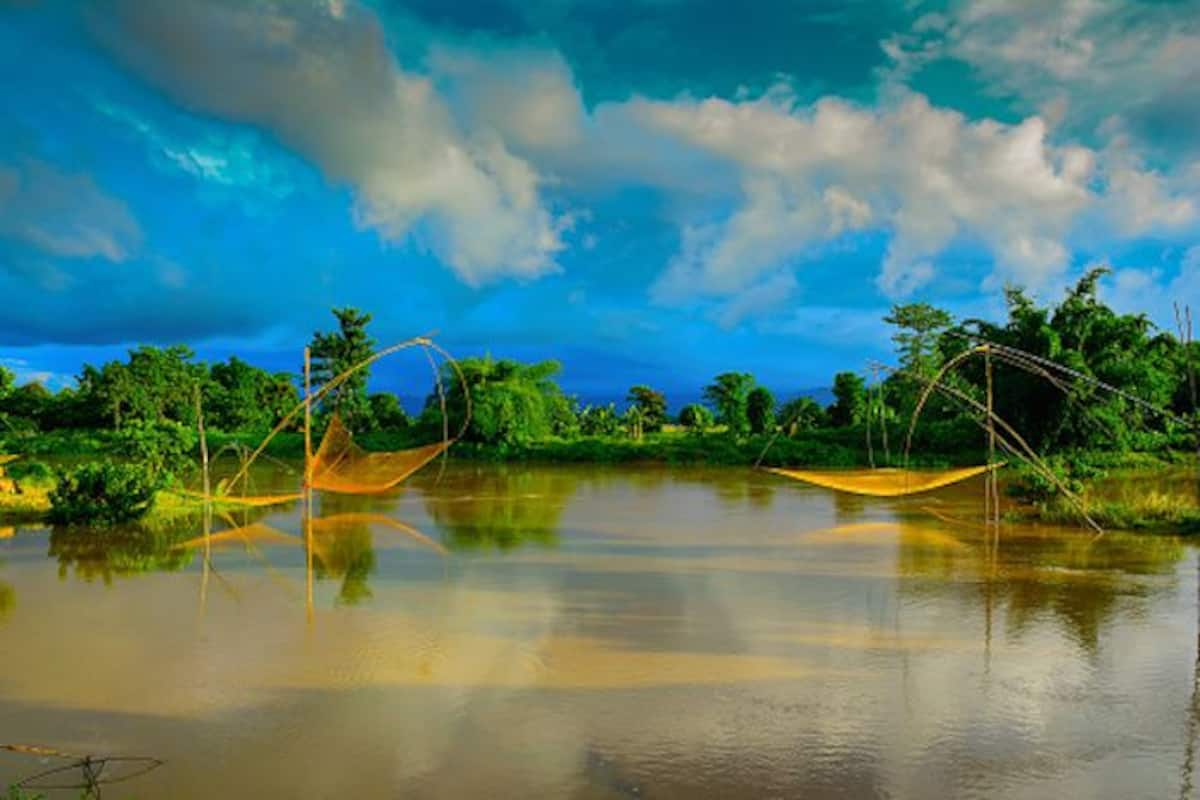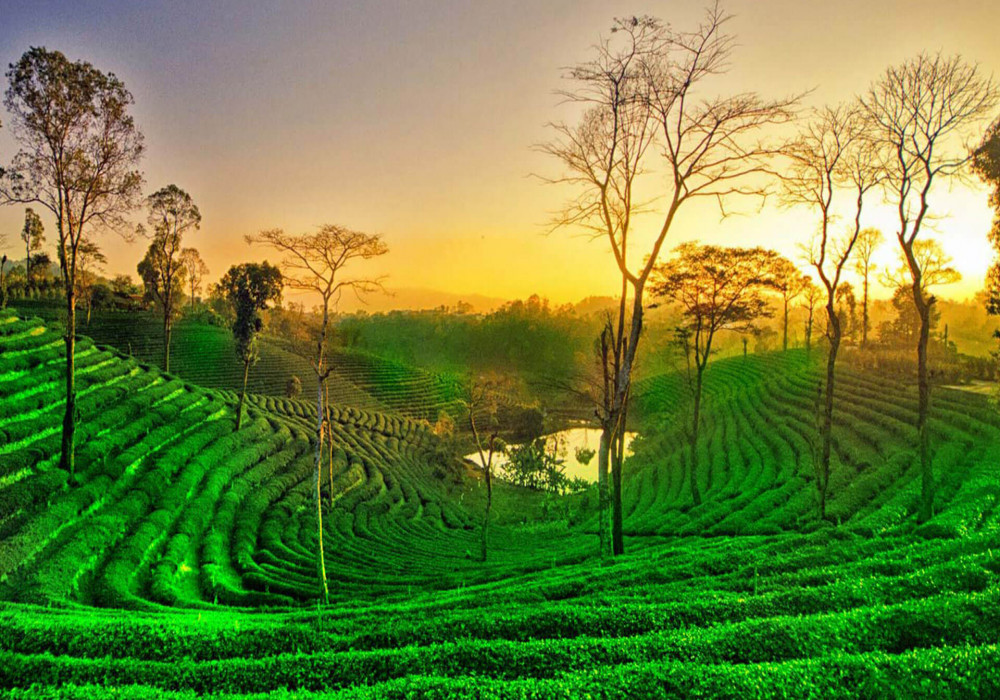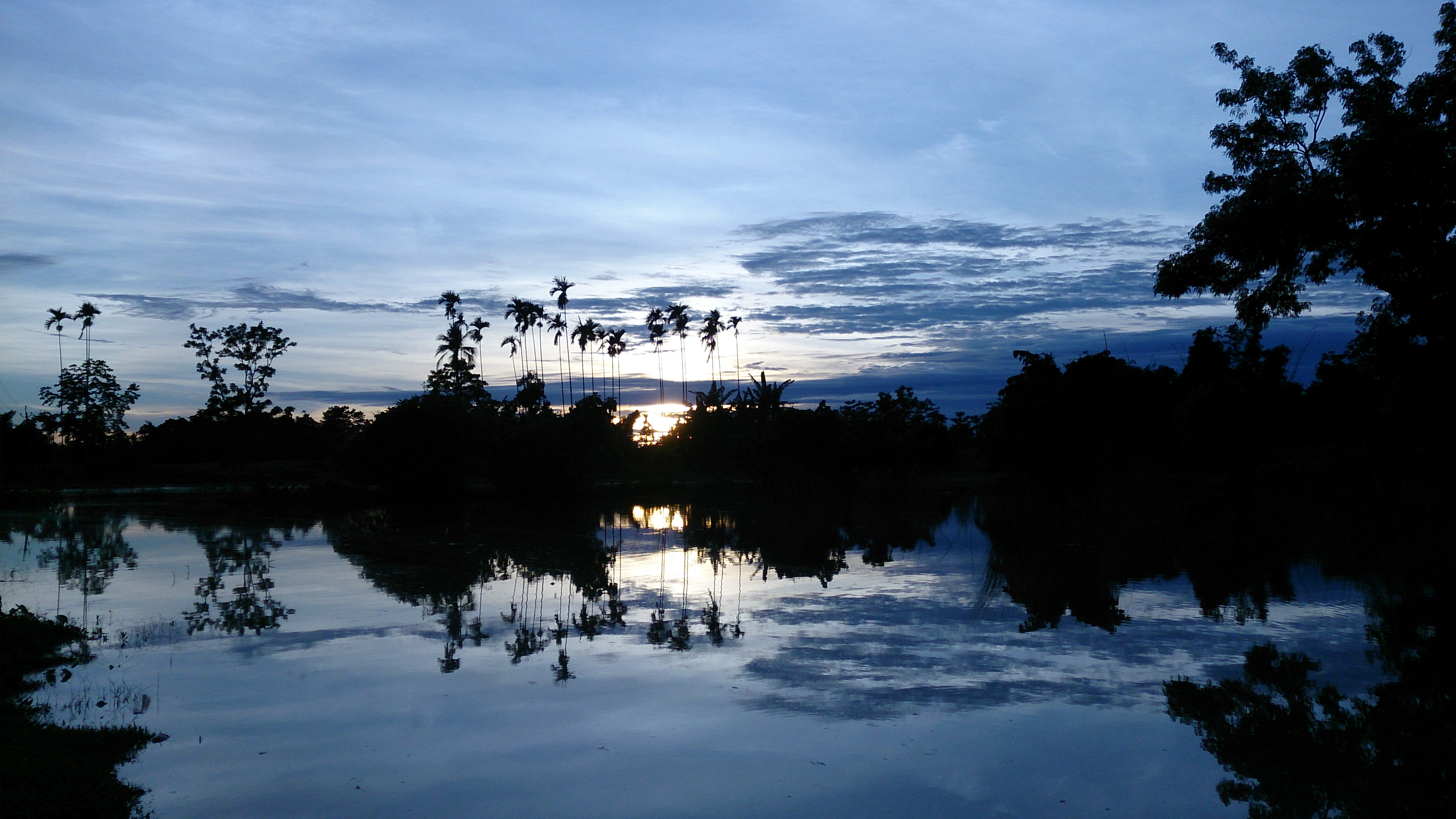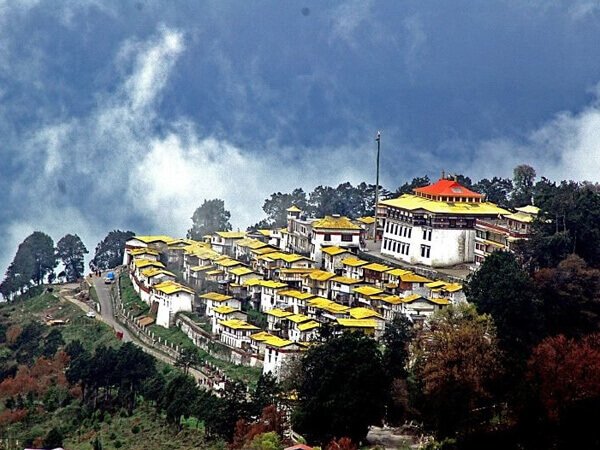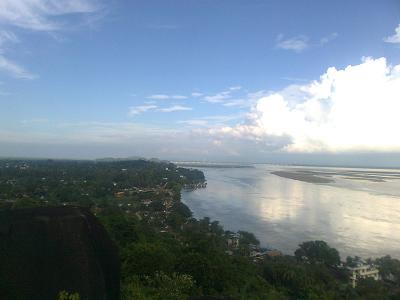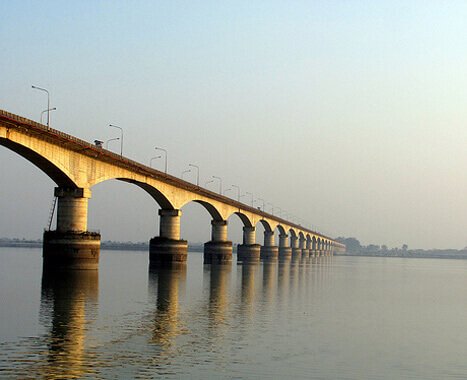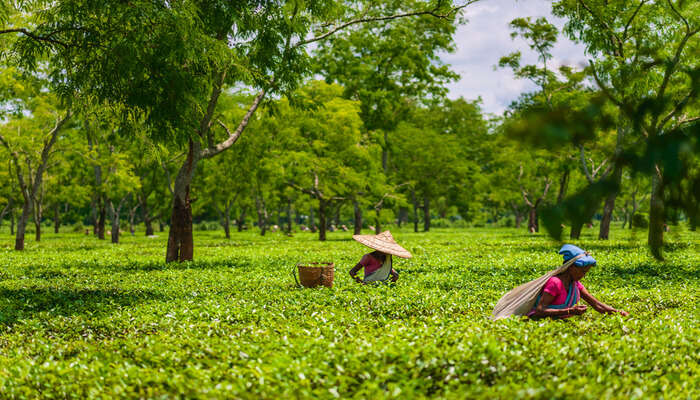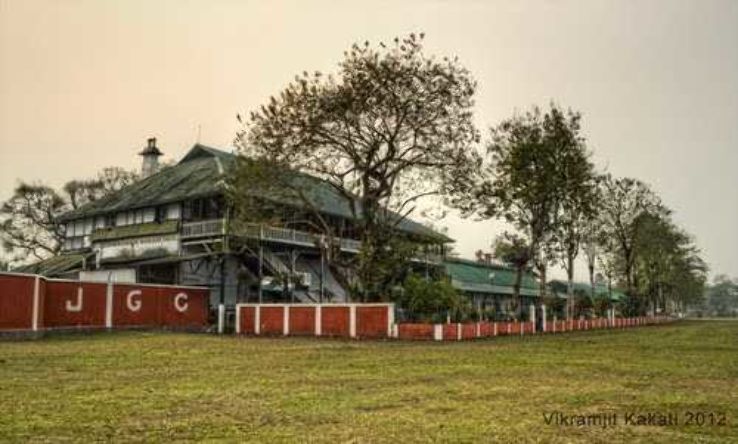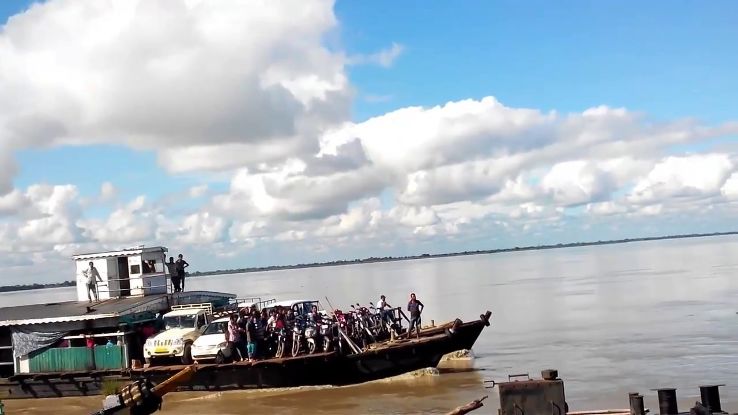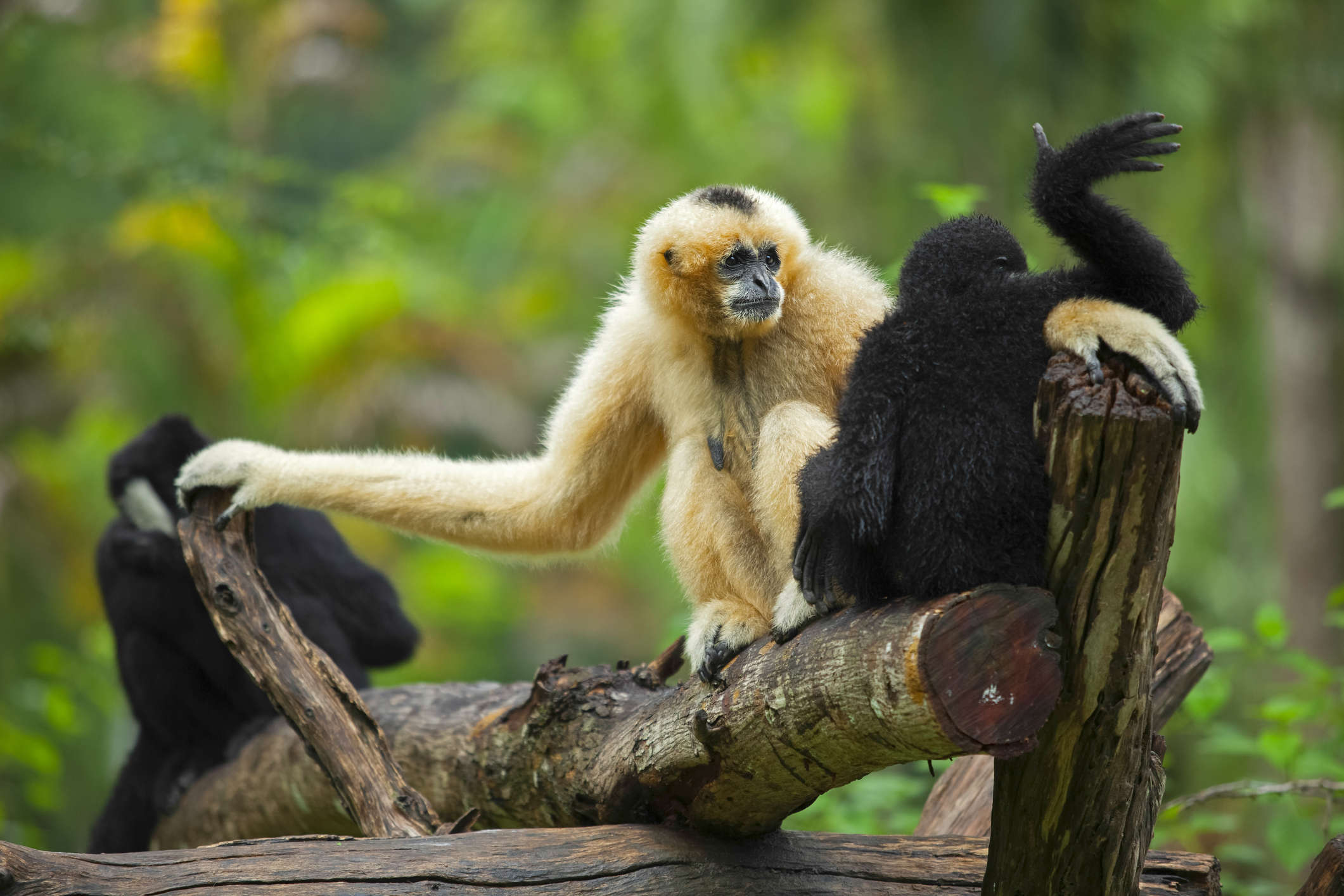Darrang
Moving on, our next destination is Darrang, a town which lies about 75 km east of Sualkuchi and about 75 km northeast of Guwahati. Created in 1983, there are no definite records about Darrang in the medieval era, but it was thought to perhaps have been formed as part of the ancient kingdom of Kamarupa and with its decline, Darrang at different times might have been under the rule of the Chutia Kingdom, Bodo people and Baro-Bhuyans. In the 16th century, Darrang was under the Kamata king Nara Narayan, and on the division of his dominion among his heirs, Darrang became a part of Koch Hajo. Early in the 17th century, Raja Bali Narayan invoked the aid of the Ahoms of Upper Assam against the Mughal invaders and after his defeat and death in 1637 the Ahoms dominated the whole district. In about 1785 the Darrang Kings took advantage of the decay of the Ahom kingdom to try and re-establish their independence but were defeated by a British expedition in 1792, and in 1826 Darrang, with the rest of Assam, passed under British control. The name Darrang was derived from the Bodo word Dourang, which means a Playground of Gods. According to other scholars, the word Darrang came from Dawrang which means a Gateway, as there was a direct entry to Bhutan and from there to Nepal, China and other countries.
The Satras, which are similar to monasteries, were established by Sankardeva and later by his followers. Apart from practising Bhagawatee Baishnav here, Satriyaa Art, an art form also flourishes here. There are two Satras in Darang, the Khatara Satra, one of the oldest while the other is Dihing Satra. Visit the Satras in Darrang to witness the unique and rich culture that can only be found in Assam. Located near the Lakhimpur Village, the Kamakshya Devalaya temple is renowned for its stonework which includes an 8-petaled lotus inside the complex. Dating back to the 12th century, this temple was the preferred one by both the Ahom and Koch kings. The temple is also famous for its annual Doul Festival celebrated in springs. Bar Masjid is one of the oldest mosques in Darang while Engil Baba’s Mazaar is an architectural marvel and is located in a graveyard where Hindus and Muslims come together every Thursday to offer prayers. The Urus Mubaraka Festival is celebrated annually on 5th February. The Patharughat Swaheed Minar was established to commemorate the victims of the Jallianwala Bagh massacre of Assamese origin. The Gandhi Smriti Park is a beautiful lush green park and well maintained. Jaypal Pukhuri is a huge pond with pristine blue water which is always above ground level. The pond was established under the rule of King Jaypal and is an ideal spot for picnics. Pukhuria Beel is known for the hundreds of migratory birds and is a favourite haunt for bird lovers.
Mayong and Morigaon
Mayong or Mayang is a village that lies on the bank of the river Brahmaputra, approximately 40 km from Guwahati and on the opposite bank from Darrang. Once considered the cradle of black magic in India, today, Mayong is a tourist attraction because of its history. The origins of the name may be based on several sources including the Sanskrit word Maya or illusion, the Chutia/Tiwa/Deori word Ma-Yong which means mother, the Kachari word for an elephant, Miyong, or from maa for Mother Shakti and ongo meaning part. Some believe that Manipuris from the Moirang clan used to inhabit this area, therefore; the name Moirang became Mayhong with time.
History has it that Aurangzeb instructed his Mughal General Raja Ram Singh to defeat the Ahoms in Assam in 1667. Though he did not die here, he was defeated. In 1256-57, Ikhtiyaruddin Yuzbuk Tughril, the Sultan of Bengal attacked Assam and never came back and he, along with his army of 10,000 soldiers died there. There are numerous texts of magic even today which are preserved by the families in Mayong. Mayong has been mentioned in the Mahabharata and many ancient works. Legend has it that the Chief of the Kachari Kingdom, Ghatotkacha participated in the battle of Mahabharata after he got magical powers from Mayong. It is also believed that the forest is still home to the saints who wish to practice black magic. It seems the village is surrounded by mystery with stories of men disappearing into the air and humans beings turned into animals.
Because the Pobitara Wildlife Sanctuary is situated beside the village, Mayong village is surrounded by wildlife and has adventure sports including trekking and river sports organised in the village due to which is why it sees many adventure enthusiasts. There are also some ancient ruins of Ayurveda and black magic which have been conserved in the Mayong Central Museum which was opened in 2000. The museum has archaeological and ancient objects and artefacts kept in the museum as well as books on black magic and Ayurveda.
There are numerous shrines and temples in the village. Mayong is also known as the land of the Pancha Devta namely Lord Ganesha, Lord Vishnu, Lord Dinesh, Goddess Parvati and Lord Shiva. The shrine of Lord Shiva of Kachashila, the Lord Narasinha Ashram of Hiloikhunda, the Ganesh Temple of Hatimuria and the Kechaikhaiti Shrine of Burha Mayong are some of the significant temples. Sitajakhala is an ancient temple on the bank of the river Killing was discovered during the 1940s and is adorned with many idols of Goddess Sita and Lord Hanuman. As per popular myth, the sage Valmiki built the stone steps for Goddess Sita, going up to the River Killing for her convenience and hence the steps were named Sita Jakhala.
Located at Deosal Village near Pabitora Wildlife Sanctuary, the Deosal Siva Temple is dedicated to Lord Shiva and is famous for the festival of Shivaratri. It is believed that this village of Deosal was where the ashram of Maharishi Valmiki was located and where Goddess Sita took refuge after Lord Rama abandoned her. Another ancient temple at the top of Kachsila Hill is located a few km from Pobitora. Dating back to the 9th century, the temple houses many idols of Lord Shiva and Goddess Parvati as well as many idols of Lord Ganesh in the complex. The rare statues and stones often attract researchers. Sivakunda is a waterfall that is a popular picnic spot located in the Amsoi Hills and is best visited between October and March.

A wildlife sanctuary on the southern bank of the Brahmaputra, the Pobitora Wildlife Sanctuary was declared as such in 1987 and covers an area of 38.85 sq km. With one of the largest Indian rhinoceros populations in Assam, the sanctuary provides a grassland and wetland habitat for the animal consisting of at least 15 different species of grass. Other mammals in the sanctuary include the golden jackal, the wild boar and the feral water buffalo with the barking deer, the Indian leopard and the rhesus macaque living in the sanctuary’s hilly areas. Pobitora is home to more than 2000 migratory birds and various reptiles and is also called the Bharatpur of the East.
After Pobitora Wildlife Sanctuary saw a 10% increase in its rhino population, it exceeded its rhino-bearing capacity and became overpopulated and so the animals began moving outside the sanctuary in search of food, and chances of serious man-animal conflict became quite rife and the straying animals carried the risk of contracting diseases that afflicted domestic animals. Under the Indian Rhino Vision 2020, eight rhinos were translocated from Pobitora and re-introduced into the Manas National Park. The park is usually crowded during weekends and the holiday season, so visiting during that time, one needs to reach early to book elephant rides as they tend to be in short supply during the peak season.

The elephant safari is run between 6:30 am and 7:30 am while the rest of the day is for jeep rides through the forest. The first jeep safari departs at 7 am and the last one at 3 pm with an hour’s break from 12 noon to 1 pm. The rate for the jeep safari is INR 1,300 for a group of six people, which includes the cost of toll, guide and security. Solo travellers can join a group of travellers so they don’t have to pay for the whole jeep and this is the rate for the specific route tour. One can also choose to spend the whole day inside the park, and the cost for the same is INR 200 for Indians and INR 2,000 for foreigners. Elephant safaris cost INR 500 per person for Indians and INR 1,000 per person for foreigners. Photography is likely to incur an additional cost of INR 50. Permits to enter Pobitora National Park is available at the entrance in exchange for INR 50 per person for Indians and INR 500 per person for foreigners. The best time to visit the sanctuary is between November and February as the climate then is pleasant during the day and chilly at night. The monsoon season should be strictly avoided as the region is prone to flash floods and the conditions of the roads make travelling almost impossible.
Nagaon
About 75 km east of Mayong and 122 km east of Guwahati lies Nagaon which used to be the Assam’s most populous district until 2011 when it lost its title to Dhubri after the split of the Hojai district. It is also famously known as the Rice bowl of Assam and is rich in paddy. Located in Assam’s heartland, Nagaon lies at the centre of northeast India and dates back to 1833. Its British administrators jocularly described Nagaon as a district of 3 C’s; namely: Chickens, Children and Cases. The Kaziranga National Park is close by which makes Nagaon a tourist magnet.
The eastern, western and southern segments of Nagaon were initially ruled by different feudal kings or their agents with the geography of these segments deciding who their ruler would be. Nagaon was spelt as Nowgong, and it was only in 1832 after it became a separate district administrative unit that the name became Nagaon where Na means new and gaon means village.
Nagaon is the birthplace of Mahapurush Srimanta Sankardeva, the great founder of Vaishnavism, an artist, dramatist and author. Nagaon is also home to the Laokhowa Wildlife Sanctuary. Located at Laokhowa and covering an area of 70 sq km, the sanctuary is located at a distance of 25 km from the Nagaon. The main attraction here is the Great Indian one-horned Rhinoceros and other animals include tigers, civet cats, leopards, Asiatic buffalos, wild boars and hog deers. The Champawati Kunda falls in Chapanala is a sight to behold while Kaliabor, famous as a historical place was the scene of several battles against the Muslim invaders. Silghat is a vital and picturesque river port lying on the south bank of the Brahmaputra and has several temples. Nagaon is also especially famous for its two satras, the Narowa Satra and the Salaguri Satra, which are believed to have been founded by Srimanta Sankardeva in 1494 after he returned from his first pilgrimage.
An integral institution of worship in the Vaishnavite culture, almost every Assamese locality houses a Namghar which means a House of Prayer and is a congregation hall where people recite the name of Lord Krishna. The architecture and structure of these Namghars are worth mentioning, and the unique element here is the ghaaikhuta or laikhuta, which is an oversized column in the mandap or the assembly place. No one is allowed to sit near this column since it is believed to be the seat of the Lord. The most prominent Namghars in Nagaon are the Bharali Namghar, situated in Hatbar and the Bordowa Namghar located in Nagaon Satra where Mahapurush Sankardev was born.
Tezpur
Located on the northern bank of the River Brahmaputra, Tezpur lies 175 km northeast of Guwahati, 57 km north of Nagaon and is the largest of the north bank cities. Known as Assam’s cultural capital, Tezpur has a rich cultural heritage with beautiful hillocks, parks and gardens.
Agnigarh which means a fire fort or a residence set amidst fire is a big fortress on a hilltop on the banks of the Brahmaputra. It was the site of the legendary romance between Princess Usha, the only daughter of King Banasura and Aniruddha, the grandson of Lord Krishna. According to legend, Usha was imprisoned on this hillock which was surrounded by fire and hence the name Agnigarh. To reach the fortress, one needs to climb the circular staircase and from the top, there are splendid views of Tezpur and the Brahmaputra.

The ruins of the Bamuni Hills dating to the 9th and 10th centuries are famous for their artistic finesse. The influence of the Gupta style of architecture is seen here with the stone carvings depicted on the walls a fine specimen of the architectural brilliance of that age. Here, one can find Lord Vishnu’s 10 incarnations depicted in the bracket lintel that is cross-shaped.
Ouguri Hill located on Brahmaputra’s bank poses tough challenges to climbers with its giant monoliths. The view from the hilltop is breathtaking with Tezpur lying on one side and the River Brahmaputra on the other side. On the top of the hill, there is a statue of Kanaklata, a martyr during the Quit India Movement. The ancient temple of Mahabhairab stands to the north of Tezpur and is believed to have been established by King Bana with a Shiva Lingam. Formerly, this temple was built of stone but the present one is built of concrete. During the later years, the Ahom kings donated a lot of land for the temple. The Rudrapada Temple lies to the east of Tezpur, on the banks of the Brahmaputra. It is believed that Lord Shiva in the Rudra form left the print of his left foot or pada on a stone found in the temple. It is believed that the Lord showed his real self to King Bana here. The temple was built by King Siva Singha in 1730 and the main temple was destroyed, due to erosion of the river Brahmaputra. The doorframe of the Da-Parbatia temple is said to be belonging to 600 and is the most ancient specimen of that time depicting the Gupta style of sculpture. The site is now protected by the Archaeological Survey of India. The Nag-Sankar Temple belongs to the 4th century and is believed to be constructed by King Nagsankar of the Lohitya dynasty. The temple was renovated in 1480 by the Ahom King Su-sen-pha. Another theory is that the temple was constructed by King Nagmatta. The large pond in the temple is home to a variety of fish and turtles with some turtles said to be over 100 years old and the park houses deer, peacocks and pythons. The Ketakeshwar Dewal is a famous temple devoted to Lord Shiva and is unique as the Shivalingam in the temple is one of the biggest in the world with the temple comprising of two parts. Legend has it that this Shivalingam was uprooted during a severe earthquake and got fixed in the current position after that.
Padum Pukhuri is a beautiful lotus lake with an island that has been developed into a beautiful park with a musical fountain. There is an iron bridge to take one to the island and one can boat on the lake. One of the attractions of the park is the toy train. Hazara Pukhuri is a large tank named after Harjar Varman which was built in the early part of the 9th century.
Chitralekha Udyan or Cole Park is a beautiful garden established by the then British Deputy Commissioner, Mr Cole in 1906. The park which is set in a stunning landscape with many hillocks and lakes has two massive ornamented stone pillars and other sculptural remnants. It was renovated and revitalized in 1996 and now has a water sports facility, walkways, restaurants and an open-air stage. Trimurty Udyan is a park named after the three jewels of Assamese culture – Rupkowar Jyoti Prasad Agarwalla, Kalaguru Bishnu Prasad Rabha and Natasurjya Phani Sarmah.
Bhomoraguri is a mammoth stone inscription made by the Ahom General Kalia Bhomora Borphukan, who planned to construct a bridge over the Brahmaputra. Almost two centuries later, a bridge at the same site now stands completed. The 3.015 km bridge, which took six months to complete is named after the great Ahom general, connects Silghat of Nagaon district with Tezpur. The Bura-Chapori Wildlife Sanctuary, situated 30 km from Tezpur on the banks of the Brahmaputra covers an area of 44.06 sq km and has a wide range of flora and fauna including tigers, wild buffaloes, wild pigs, one-horned rhinos and elephants. The District Museum of Tezpur was established in 1986 and provides an insight into the culture of the region. Some of the collections on display here include traditional textiles of Assamese, silver coins, copper coins, inscriptions, manuscripts and stone sculptures.
Jorhat
From Tezpur, our next destination is Jorhat which lies about 162 km east of Jorhat and about 305 km east of Guwahati. Jorhat or Jorehaut means twin hats or markets which refer to Macharhat and Chowkihat which were on the two banks of the river Bhogdoi during the 18th century. The northernmost area of the present district was a part of the Chutiya Kingdom before the Ahom-Chutiya war in the 16th century. In 1794 the Ahom king Gaurinath Singha shifted the capital from Sibsagar to Jorhat which was a flourishing and commercial metropolis but was destroyed after a series of invasions from the Burmese from 1817 till the arrival of the British forces in 1824. On the north of the district, the river Brahmaputra forms the largest riverine island of the world, Majuli, spread over 924.6 sq km which is today being threatened by erosion. Jorhat is well known for its extensive tea gardens and is the nerve centre of the tea industry, including the Tocklai Experimental Centre where research is carried out to find new varieties of tea as well as the curative effects of green tea.
Established by the saint and reformer Madhabdev in 1461, the famous Dhekiakhowa Bor Namghar is just 4 km from the city. The centre was opened to preach Vaishnavism and is a large complex where various cultural and social programmes are held. The Burigosain Devalay is located in the heart of Jorhat with Burigosain the presiding deity with the other deity that of a priest with the deities brought in from Jayantiya and established first at Rangpur and later shifted to its present location. The Hatibaruah Namghar is very important to those of the Ekasarana sect. A Namghar is not just a place of worship but also functions as a meeting house for the congregation. The structure has assembly halls which are usually rectangular buildings with a hip roof raised on pillars. The west end of the hall is called a Manikut which refers to the jewel hut and houses idols called Guru Asana. Devotees sit facing each other in North-South direction emphasising on the Bhakat or worshiper with prayers led by a Naam Loguwa who faces the idol. This temple also serves as a place of cultural and sectional activities like Bhaona or dance. The Namghar is open daily between 6 am and 8 pm.
A Namghar, the Dhekiakhowa Bornamghar is said to have been built by Madhavdeva, a saint-reformer who ignited the earthen lamp which has been burning nonstop since 1528. The Namghar is spread across 8 acres and is the site for many social, cultural and religious activities. According to legend, Madhavdevi came to the village of Dhekiakhowa after spreading Ekasarana Nam Dharma and reforming people and decided to take shelter at the hut of an old woman who served him Dhekia Saak which is a very common vegetable along with rice. She was embarrassed at serving this to Madhavdevi but he was very impressed with her hospitality. As a result, he started the Dhekiakhowa Bornamghar here and gave the old woman the responsibility of igniting the earthen lamp every day. This Namgar is known for making wishes come true and is worth a visit.
Ladai Garh is a fortified structure nearly 15 km from Jorhat and was constructed by King Pratap Sinha to protect his kingdom from the neighbouring kingdoms. The fort comprises three parts out of which one, Mera Garh is at Majuli. Magolu Khat is a historical site constructed by King Rajeshwar Sinha after he married the Manipuri princess, Kuranganayani. Even though it is in ruins today, it is worth a visit. Magolu Khat is on all days from 8 am to 7 pm and there is no entry fee. Sukapha Samannay Kshetra was constructed in the memory of Sukapha, the first Ahom king of Assam. An excavation is undergoing here hoping to find remains of the Ahom Kingdom. Created to keep elephants, Gazpur is in ruins today. The local king is said to have asked his soldiers to bring around 1000 elephants that he had captured here to celebrate the inauguration of a new city under his rule. When the city was first established, the king called it Hatigarh but soon the king realised that his desire of capturing 1000 elephants and keeping them here was not conceivable and as a result changed the name to Gazpur, which comes from the Assamese word, Gaz which means elephants. Gazpur is open on all days and entry is free.
Bangalpukhari is a water tank created in 1739. The water tank is untouched due to the myth that it will bring a bad omen. The story of Bangalpukhari dates back to when it was built after the slaughter of the Ahom governor, Badan Barphukan who was infamous for torturing innocent Assamese and Burmese soldiers. Rupali Singh Bhangal, the man who killed Barphukan was awarded money for this act of bravery, which he used to build this tank. Hence, the people of Jorhat do not use this tank since it was built in the blood of a man. Open at all hours of the day, there is no entry fee to visit Bangalpukhari.
Nimati Ghat, or Nimati, is an essential port in Assam and the only entry point to Majuli and it serves as a link for ferries that go to Auniata and Kamalabari. Located near the Brahmaputra, the ghat is significant not only for local villages but also for upper Assam. The ferries that run from Nimati Ghat to Majuli are government-run and hence are simple wooden boats with long benches on the side, facing each other. The ferry runs on all days of the week and the charges are INR 15 per person, with someone wanting to take their vehicles on board needing INR 800 per vehicle. The first ferry leaves Nimati at 8:30 and the last one leaves at 4 pm while the first ferry from Majuli leaves at 7:30 am and the last one at 3:15 pm.
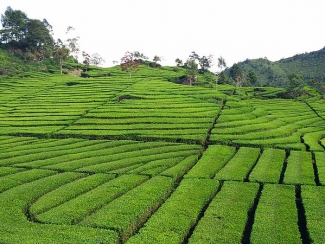
The Cinnamora Tea Estate was established by Maniram Dewan in 1850 and is the first tea estate in Assam. The Tocklai Tea Centre, also known as Tocklai Tea Research Center or Tocklai Experimental Station for Tea Research is a laboratory and research institute located near river Tocklai. Established in 1911, this tea station is one of the largest and oldest tea stations in the world. The idea of the centre is to improve tea development by discovering a range of methods for expanding the dietary estimation of the drink. The centre has eight main research departments including botany, soil, agronomy, engineering, biochemistry, tea tasting, plant protection, statistics, manufacturing technology and agricultural economics. The centre is open between 8:30 am to 5 pm daily.
Located around 20 km from Jorhat, the isolated Hoollongapar Gibbon Wildlife Sanctuary is famous for its Hoolock Gibbon population. Surrounded by the Brahmaputra river on one side and with tea gardens everywhere else, this is a good enclosure for the 40 or so species of Hoolock Gibbons residing here. Apart from the Gibbon, one can see capped langurs, stump-tailed macaques, pigtail macaques, Assamese macaques, rhesus macaques, slow loris, elephants and many other species.
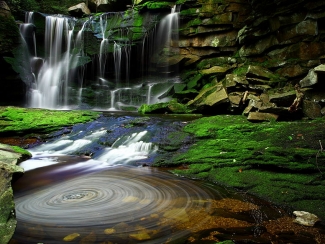
Located at an altitude of 116 meters, the Kakochang Waterfalls are also called Kakojan and are situated in the unknown forests of Bokakhat. The remains of the historical Numaligarh fort can be found here and the waterfalls offer a great view of the tea gardens of Difanu, Hathkhuli, Behora Borchapori and Methoni and serve as a great picnic spot. The falls have clear water falling from the top of the hill which gathers in a natural pond below. Open all day and at all hours, it is however recommended to visit the waterfall only during the day to ensure safety.

